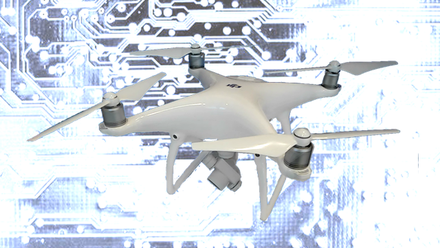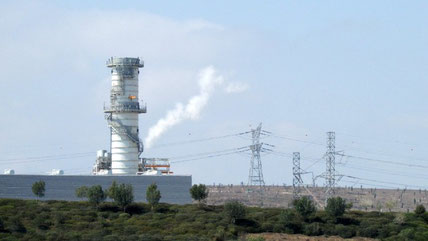פרסומים ודוחות
Overview of the Israeli electricity market 2024

This report overviews the 2023-24 developments in the Israeli electricity market with emphasis on the power generation segment. The deployment progress in renewables continued to slow down, especially in the second half of the year and in early 2024 due to security crisis. In terms of conventional generation, the market mainly followed the implications of the Electricity Reform, continuing to tansfer Natural Gas-powered generation from the Israel Electric Corp to the private segment and preparing to retire old coal units in the Hadera power plant. By the end of 2023, Israeli national electric generation capacity stood at 23.9 GWp, with private producers (IPPs) making up 53.3% of total grid-connected capacity and Israel Electric Corp (IEC) making up the remaining 46.7%. In terms of electricity generation in the Israeli market, 77.4 million kWh were produced in 2023, up from 76.9 million kWh in 2022. The 2023 generation segment was relying on a mix of fuels, dominated by natural gas and coal - both utilized by the Israel Electric Corp (IEC) as primary fuels. Secondary fuels of the IEC were diesel, oil fuel and methanol. Private power generation facilities were primary relying on natural gas, while diesel, oil fuel, kerogen and renewables were secondary energy sources. Notably, renewables reached the share of 11.5% of market supply in 2023 (close to LNRG's projected 12%) and are expected to reach 12.8% in 2024, primarily driven by solar PV generation.
Global solar PV operation and maintenance market 2024

This research estimates the size and trends of the global solar photovoltaic (PV) operation and maintenance (O&M) market as of 2024. The methodology for this work includes segmentation of the global market to multiple countries, with each country having a different ratio of residential, commercial, industrial and utility scale solar installations. The result of this study for 2024 - global solar photovoltaic (PV) market O&M size cap is 29.0 billion USD, composed of distributed (residential and commercial) 13.4 billion USD and centralized (large industrial and utility-scale) 15.6 billion USD segments. The estimate is that by 2025 the global solar PV O&M market would grow to a total of 36.3 billion USD, composed of 17.6 billion USD distributed and 18.7 billion USD centralized solar market segments.
Qatar's LNG Market Surge: A Strategic Advantage Amid Global Turmoil

Amidst geopolitical tensions in Ukraine, Israel, and the Iranian-sponsored Red Sea blockade, Qatar stands poised to capitalize on the surging demand for liquefied natural gas (LNG). QatarEnergy's recent signing of four agreements to charter 19 LNG carriers from Asian ship operators underscores the nation's strategic positioning in the global energy landscape. The agreements, announced by Qatar's Energy Minister Saad Al-Kaabi at a ceremony in Doha, signify a significant expansion of Qatar's LNG export capacity. China's CMES Co. Ltd. and Shandong MarineGroup Ltd. will each supply six vessels, while Malaysia's MISC Bhd will provide three. Additionally, a joint venture between Kawasaki Kisen Kaisha Ltd. and Hyundai Glovis Co. will contribute four LNG carriers. With each vessel boasting a capacity of 174,000 cubic meters, Qatar is gearing up to meet the escalating demand for LNG in key markets.
Unlocking Energy Innovation: The Power of Technological-Oriented Market Research

LNRG Technology is dedicated to driving energy innovation forward and revolutionizing the way we power the world. With the comprehensive suite of high-tier consulting services, LNRG offers industry-leading expertise in market research, technology scouting, R&D project management, system design and engineering, and techno-economic modeling for conventional and renewable electricity projects, with a special focus on solar photovoltaic (PV) technology. Market research is the cornerstone of informed decision-making and successful project execution in the dynamic energy landscape.
Energy market implications of disrupted maritime trade via the Red Sea

The Red Sea, a vital trade route for oil, fuel, and consumer goods shipments, has become a focal point of escalating tensions in the past two and a half months. In a dramatic turn of events, global energy giant BP has announced a temporary halt to all oil shipments through the Red Sea. The decision comes in response to a series of attacks on vessels by Houthi militants, plunging the Middle East into the brink of a regional war with potentially far-reaching global consequences. Several major freight companies have also suspended their ships after being targeted by Houthi militants in Yemen. The security concerns have raised alarms across the industry, emphasizing the vulnerability of one of the world's most critical maritime passages.
Assessment of EastMed hydrocarbon resources 2023

The Eastern Mediterranean (EastMed) has produced significant discoveries of hydrocarbon resources since the late 1990s and has become a strategic point of international cooperation, though also a focal point for potential conflicts in the region. This assessment summarizes the 2023 discoveries and development of natural gas and other hydrocarbon resources in the EastMed region. Those discoveries had prompted Israel and Egypt to begin massive industrial gas production offshore projects in the Levant Basin, whereas Cyprus and Palestinian Gaza which do pocess proven resources in their economic zones are yet to begin explotation and monetization. As for Lebanon, the country is yet to prove actual gas resources despite promising prospects, while Turkish attempts to drill around the island of Cyprus on behalf of Northern Cyprus has fallen short. Finally, Syrian offshore zones couldn't yet produce any find due to long-lasting security crisis in the country.
Analysis of innovative rechargeable battery technologies 2023

Rechargeable batteries, encompassing secondary electrochemical cells, have a profound role in multiple industries and hold the potential to become a disrupting element for future infrastructures. The market of rechargeable batteries is rapidly expanding, fueled by the growing utilization of rechargeable cells and packs in portable electronic devices, electric mobility solutions, grid energy storage and also a growing use within the general industry. This analysis brings the 2023 research and development comparative progress map of innovative rechargeable battery technologies, with the commercialization status of each technology. The survey is aimed to assist corporate innovation managers and empower strategic decision makers towards future market developments in the energy storage sector.
Survey of Israeli drone technology companies 2023

This market survey identified 85 Israeli civilian drone technology companies including providers of UAVs & Platforms, Drone Systems, Anti-Drone solutions, Passenger Drones and Drone Aftermarket products. Out of surveyed civilian drone technology companies, a remarkable 53% are startups – actively operating privately-held companies established within the past decade, which have yet reached an IPO or underwent M&A; the rest 47% are mature companies, including publicly traded ones. In addition, there are 14 Israeli companies which develop and manufacture military purpose drones, mostly mature companies.
Solar irradiance outlook in Eastern Mediterranean 2023

This study summarizes the 2022 ground level solar irradiance figures in the Eastern Mediterranean and makes a preliminary estimate for 2023. Regional solar irradiance data is analyzed in order to estimate and project the power generation trends of solar power facilities in the region, considering the strong link between the two variables. The average solar energy cumulative flux, measured at the IMS station in Bet Dagan in Israel's Central Coastal Plane during 2022, was 5,456 Wh/m^2 per day, some 6.2% higher than the 1965-2014 multi-year annual solar flux average. The anomaly above the standard annual deviation boundary of ±4.0% during the reference period. An estimate for 2023 based on measurements during the first nine months of the year is 5,445±55 Wh/m^2 daily. Hence, 2023 is also expected to show above average solar irradiance figures in the Eastern Mediterranean region, continuing the high-level solar irradiance trend, though not as extreme as during 2022.
The decline of Oil Economies and its impact on regional and global stability

Oil, often referred to as "black gold," has long been a strategic commodity, essential for industrial economies and military power. The late 20th century witnessed a series of conflicts and wars driven by the quest for control over oil resources. The period from the 1970s through the early 2000s was marked by several prominent oil-motivated conflicts, highlighting the geopolitics and the relentless struggle for energy resources. However, recent developments in the global energy arena have shifted the motive for oil-ralated warfare from controlling oil resources to the less predictable outbursts of violence within declining oil economies and spillover of their internal crises into regional conflicts and general instability. Hence, the 2020s will likely be characterized by dramatic geopolitical reshuffles related with the decline of major oil exporting economies who refuse to aknowledge the energy transition.
Assembly of a miniature solar home with energy storage

Assembly of a functional miniature solar home equipped with two half-cell photovoltaic devices, combiner & wiring and a connector to an external power bank. The described model is designed to charge-up a standard 5V power bank via a USB DC connection. The described solution is NOT including charge controller and hence relies on internal power bank electronics to control the battery charging state. Energy electronics prototyping involves the development and testing of innovative electronic systems and devices aimed at optimizing energy generation, storage, conversion, and consumption. This intricate field merges principles from electronics engineering with energy science to create cutting-edge solutions for the efficient utilization of power resources.
Overview of the Israeli electricity market 2023

This report overviews the 2022-23 developments in the Israeli electricity market with emphasis on the power generation segment. A significant progress continued in 2022 in renewables led by the solar segment, but slowed down substantially towards the end of the year and in early 2023. In terms of conventional generation, the market mainly followed the implications of the Electricity Reform, gradually tansferring Natural Gas-powered generation towards the private segment and preparing to retire old coal units towards the end of 2023. By the end of 2022, Israeli national electric generation capacity stood at 21.7 GWp, with IEC making up 51.5% of total grid-connected capacity, while private producers made up the remaining 48.5%. In terms of electricity generation and supply in the Israeli market, 76.9 million kWh were produced in 2022, up from 74.0 million kWh in 2021. The 2022 generation segment was relying on a mix of fuels, dominated by natural gas and coal - both utilized by the Israel Electric Corp (IEC) as primary fuels. Secondary fuels of the IEC were diesel, oil fuel and methanol. Private power generation facilities were primary relying on natural gas, while diesel, oil fuel, kerogen and renewables were secondary energy sources. Notably, renewables reached the share of 9.8% of market supply in 2022 and is expected to reach 12.0% in 2023, primarily solar PV.





